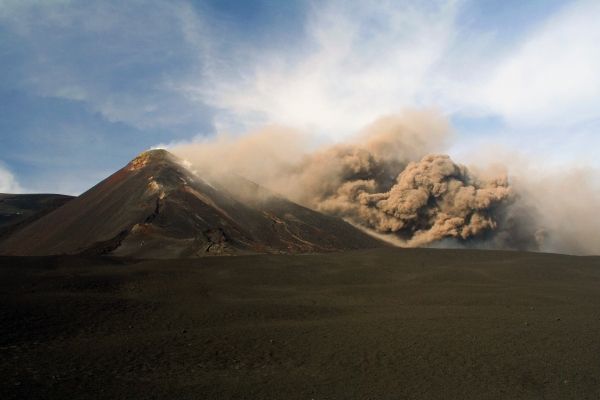Magma transports carbon dioxide stored in the Earth’s mantle to volcanoes, where it is released into the atmosphere. Writing in ‘Geology’, an Italian–German research team presents results obtained using a new methodology to clarify the contribution of volcanoes to natural CO2 emissions.
The transport of carbon dioxide stored in the Earth’s lithospheric mantle beneath the Hyblean Plateau in southern Italy at a depth of approximately 50 to 150 kilometres is responsible for the exceptionally large CO2 emission of Mount Etna. That is the result of research conducted by an international team of geologists, including researchers from the Universities of Florence (Italy) and Cologne (Germany), and from the Istituto di Geologia Ambientale e Geoingegneria of the Italian National Research Council (CNR). To reach this conclusion, the team determined the ratios of a particular set of elements in the magmas emitted by the volcanoes using cutting-edge, high-precision measurement methods. The results have been published in the article ‘A carbon-rich lithospheric mantle as a source for the large CO2 emissions of Etna volcano (Italy)’ in the journal Geology.
Over the geological times, variations in atmospheric CO2 depended mainly on volcanic emissions, which are difficult to estimate because they are not directly related to the volume of the magmas erupted. Indeed, some volcanoes show exceptionally large emission of CO2 when compared to the amount that can be dissolved in their magmas. Etna is perhaps the most striking example, contributing to 10 per cent (9000 tons/day) of the present global volcanic CO2 emission. That is three times more CO2 than a volcano like Kilauea (Hawaii) emits, which erupts four times more magma.
The team investigated magmas from four volcanoes in the region (Etna, Vulture, Stromboli, and Pantelleria), using the two rare elements Niobium (Nb) and Tantalum (Ta) as tracers. Ratios of Nb/Ta are very constant in many rocks and are only modified by few geological processes – like the infiltration of carbonate-rich melts in Earth’s mantle. The study revealed that magmas from Mount Etna and Mount Vulture are characterized by extremely high Nb/Ta ratios, higher than any other active intraplate volcano. This means that the magma compositions testify to the presence of lithospheric mantle domains beneath southern Italy that are extremely enriched in carbon. This carbon is ‘tapped’ during the melting of the magmas.
Read more at: University of Cologne
Photo Credit: tiburi via Pixabay


